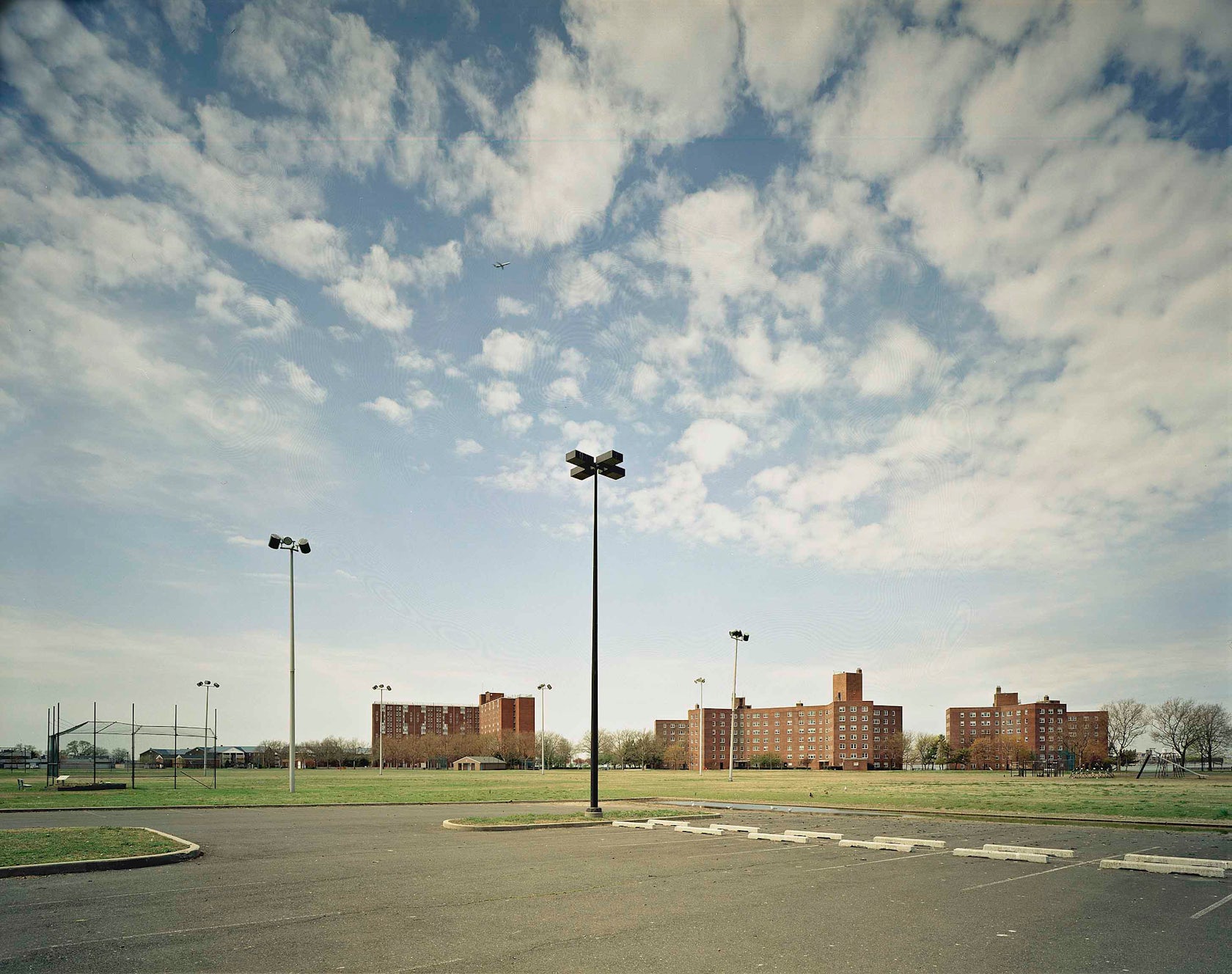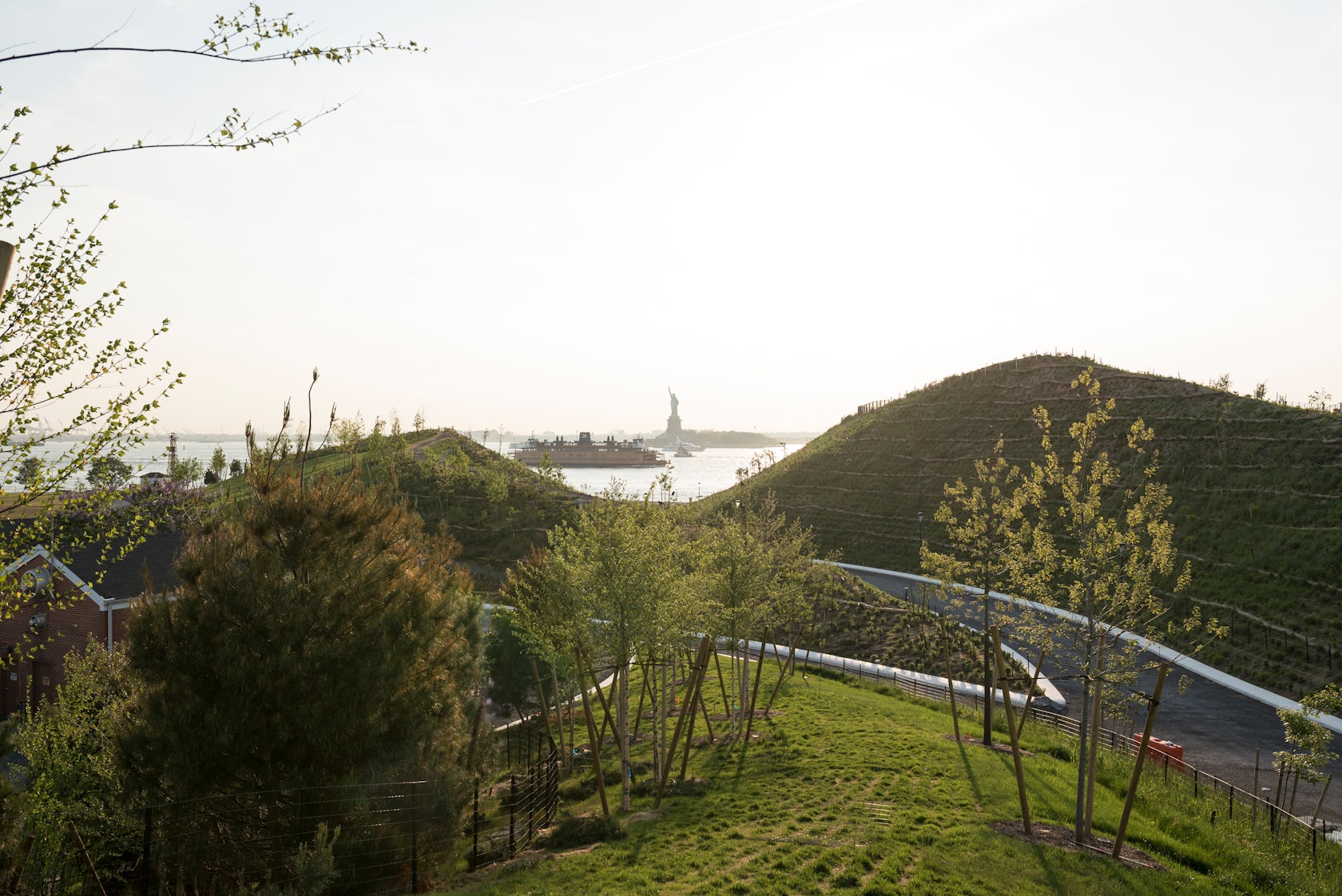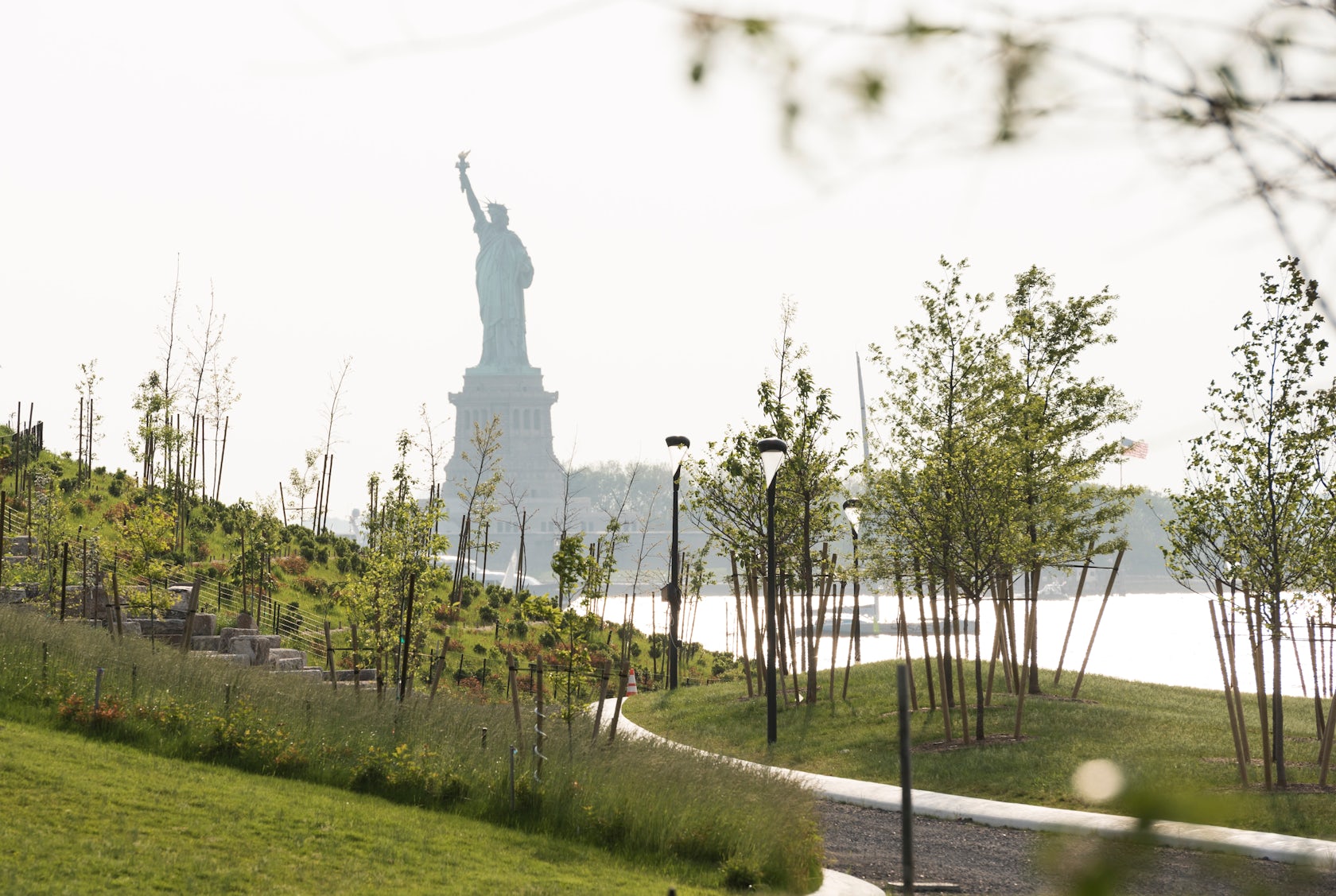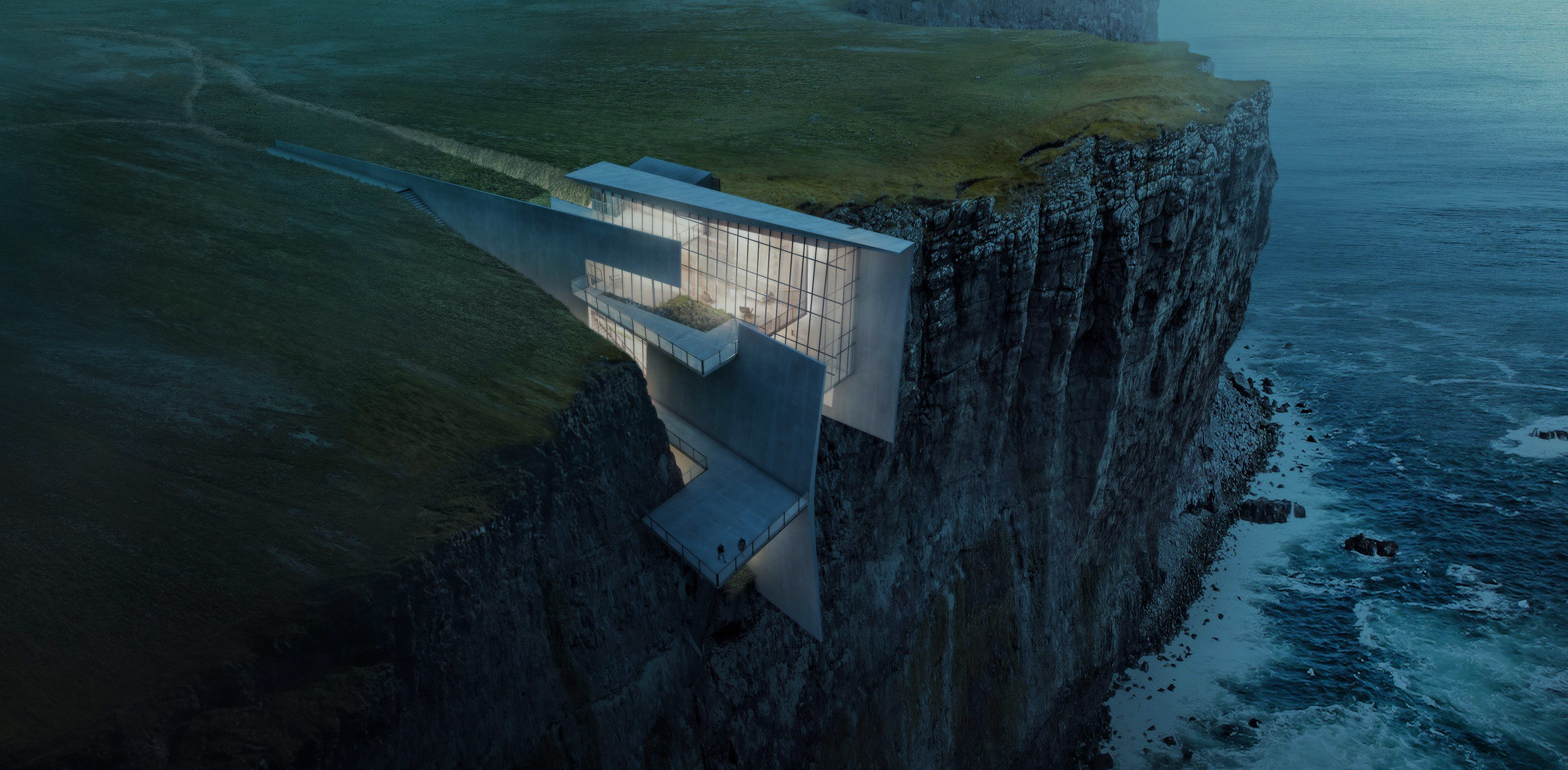This article was cowritten with Joanna Kloppenburg.
The project for a public park on Governors Island in New York City began in 2006 with an international call for proposals, the commission ultimately being awarded to landscape architecture firm West 8. Recognized for large-scale urban planning and landscape projects responsive to global warming, urbanization and infrastructure, West 8 is a Dutch firm founded in 1987 with offices in Rotterdam, New York and Belgium.
After the first phase of the project was inaugurated in 2014, today marks the ribbon-cutting of Phase 2. The celebrated Hills on Governors Island, which Architizer was thrilled to visit a week ahead of the public opening, present both an experiment in resilient coastal planning and a symbolic landmark for New Yorkers.
In its original form, Governors Island amounted to 72 acres of land. In 1911, an additional 100 acres were filled in with construction debris from the Lexington subway line. The extension allowed Governors Island to house an airfield, warehouses and military housing to complement the full-service U.S. military base that was active on the island until 1996.
In 2003, Governors Island was handed to the City and State of New York. While the northern half of the Island was landmarked as a historical district, a 22-acre plot was given to the National Park Service to develop into an attraction for the city.

Derelict, non-historical buildings were torn down and the first phase of the project — a landscaped plaza, a hammock grove and sports fields scattered among undulating pathways — was inaugurated in 2014. Two years later, Phase 2 — The Hills — opens to the public with great excitement and anticipation.
The preparation of the landscape needed to be thorough, as Governors Island’s geography makes it particularly vulnerable to flooding and water damage caused by changing sea levels. Leslie Koch, president of the Trust for Governors Island — a nonprofit organization created to manage and develop plans for the island — explains that members of the Trust were briefed by the architects on the resilient planning needed to protect the park from impending climate changes.

© Timothy Schenck
In addition to protecting the 10-acre public space from the consequences of rising sea levels, the landscape architects adopted plants from warmer climate regions for the Hills, the park’s major landscaping feature. This will help make these computer-sculpted mounds — which bury the debris of previous construction below an elaborate system of protective layers and control mats — more acclimatized to warmer winters in the future.

Throughout West 8’s project, resiliency is at the forefront of the design strategy: The architects opt for planting more trees and shrubs than necessary so that only the fittest can survive and eventually grow stronger than the average would have. In total, the Hills are home to more than 860 new trees and 41,000 shrubs planted in high-quality topsoil and protected from salty, contaminated groundwater through the elevated topography.
Within the year that construction had started, Hurricane Sandy hit New York City, constituting a major “stress test” to the park’s planning strategy and design precautions, remarks Koch.

© Timothy Schenck
The $71 million project — supported wholly by public funds and principally by the City and State of New York — encourages playful interaction, whether it be climbing rocks on Outlook Hill, sliding down NYC’s longest slide on Slide Hill or adventuring up Discovery Hill.
An objective that Leslie Koch highlights while touring us around the new park is the emphasis on creating controlled perspectives toward the Statue of Liberty, a way of giving back the iconic 128-year-old monument to New Yorkers. A symbol of the diversity of the United States and the welcoming of people from nations throughout the world, Lady Liberty is successfully hidden and revealed to the visitors of the Hills by the landscape that West 8 created for Governors Island.
“That’s what landscapes do,” concludes Koch. “They acquire new meanings.”

© Timothy Schenck
Photographs by Timothy Schenck; cover image by Iwan Baan




